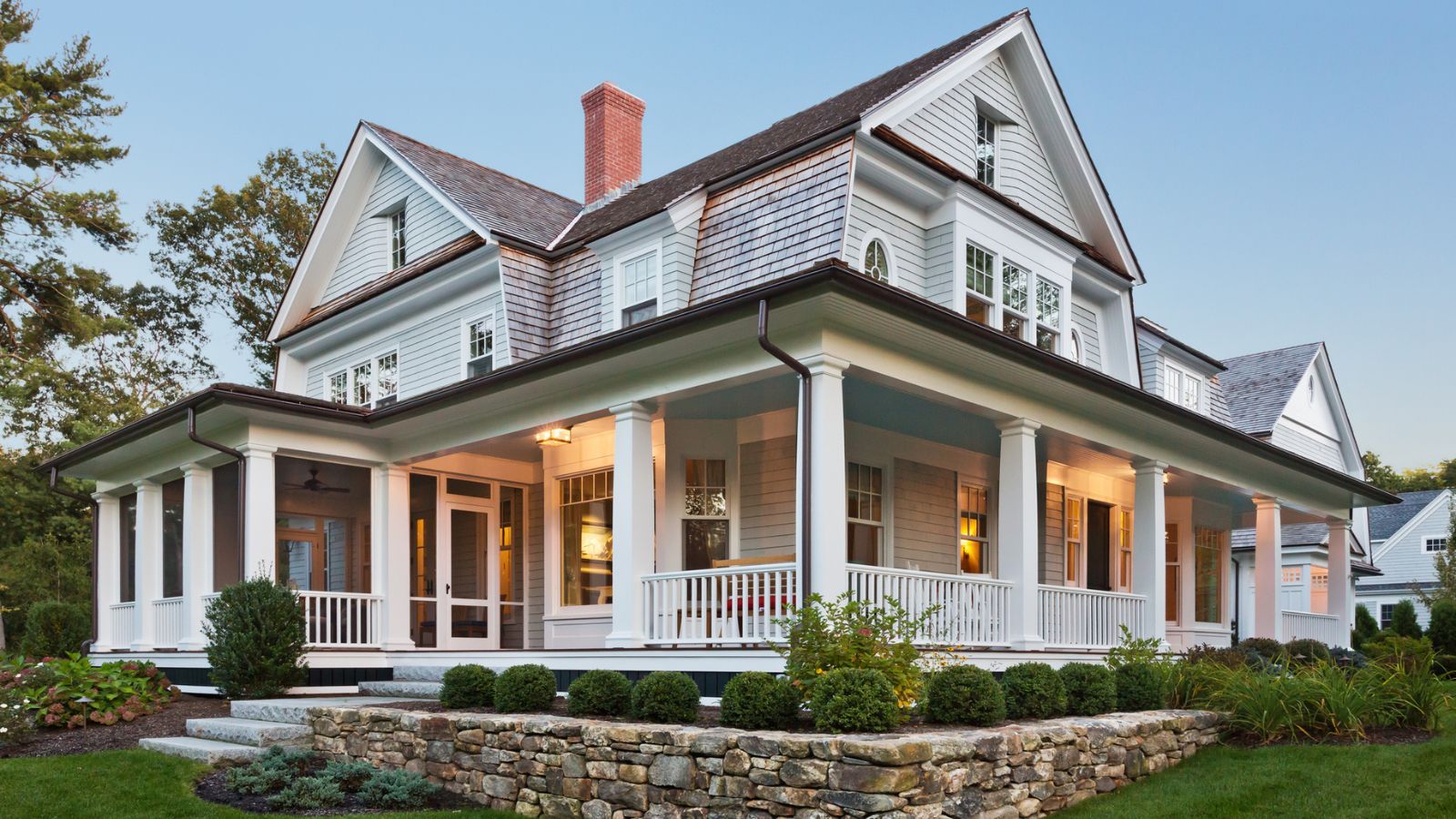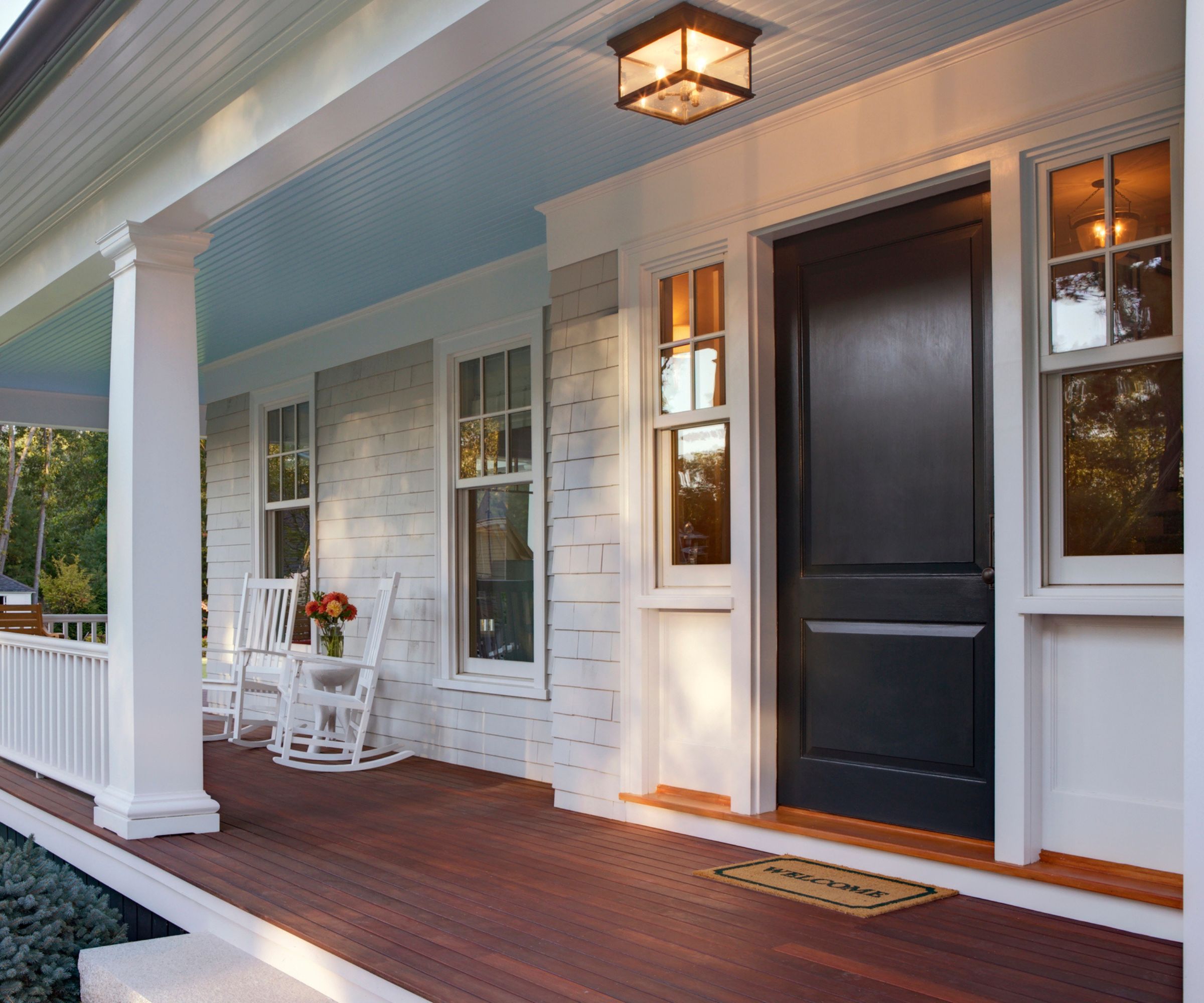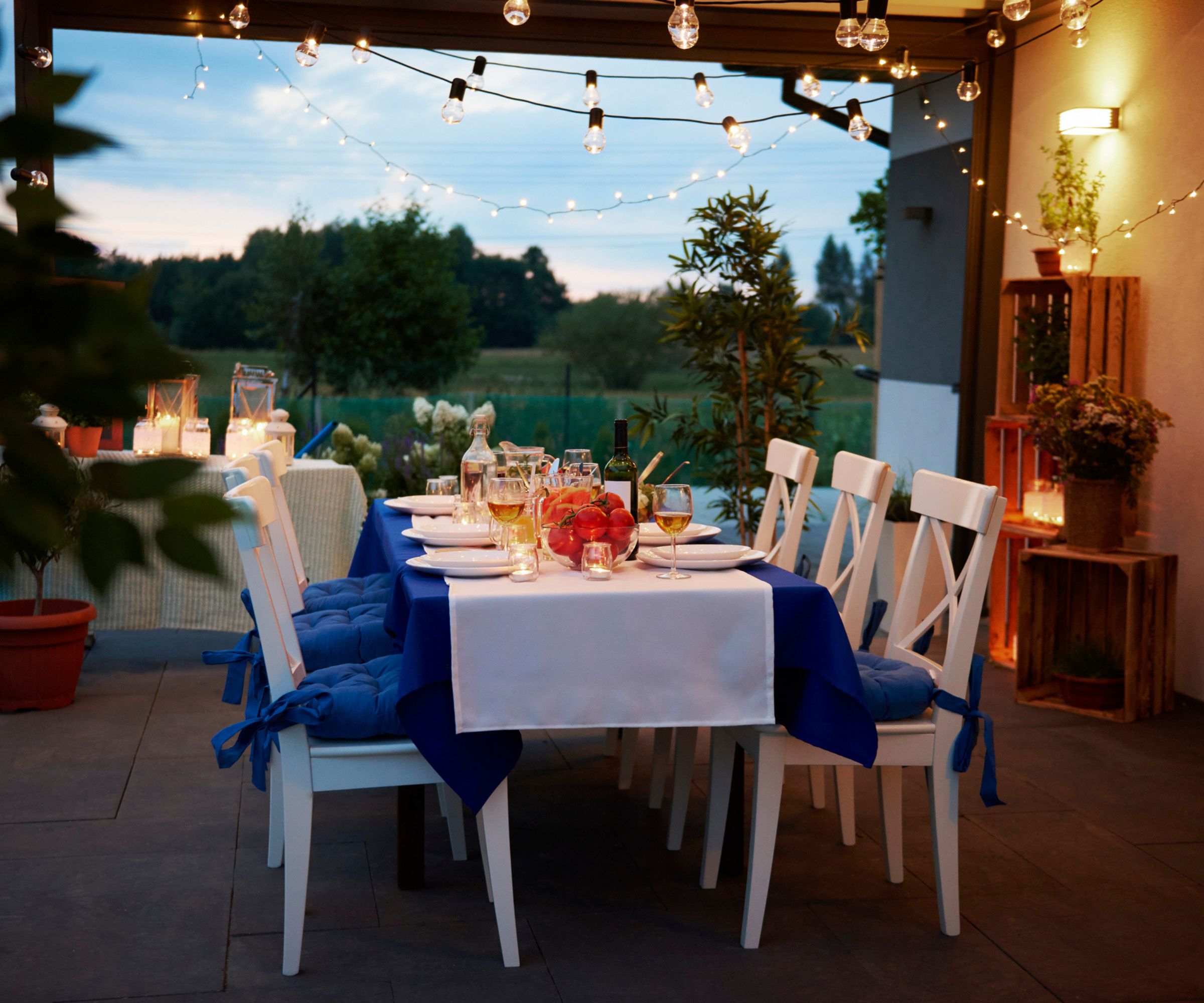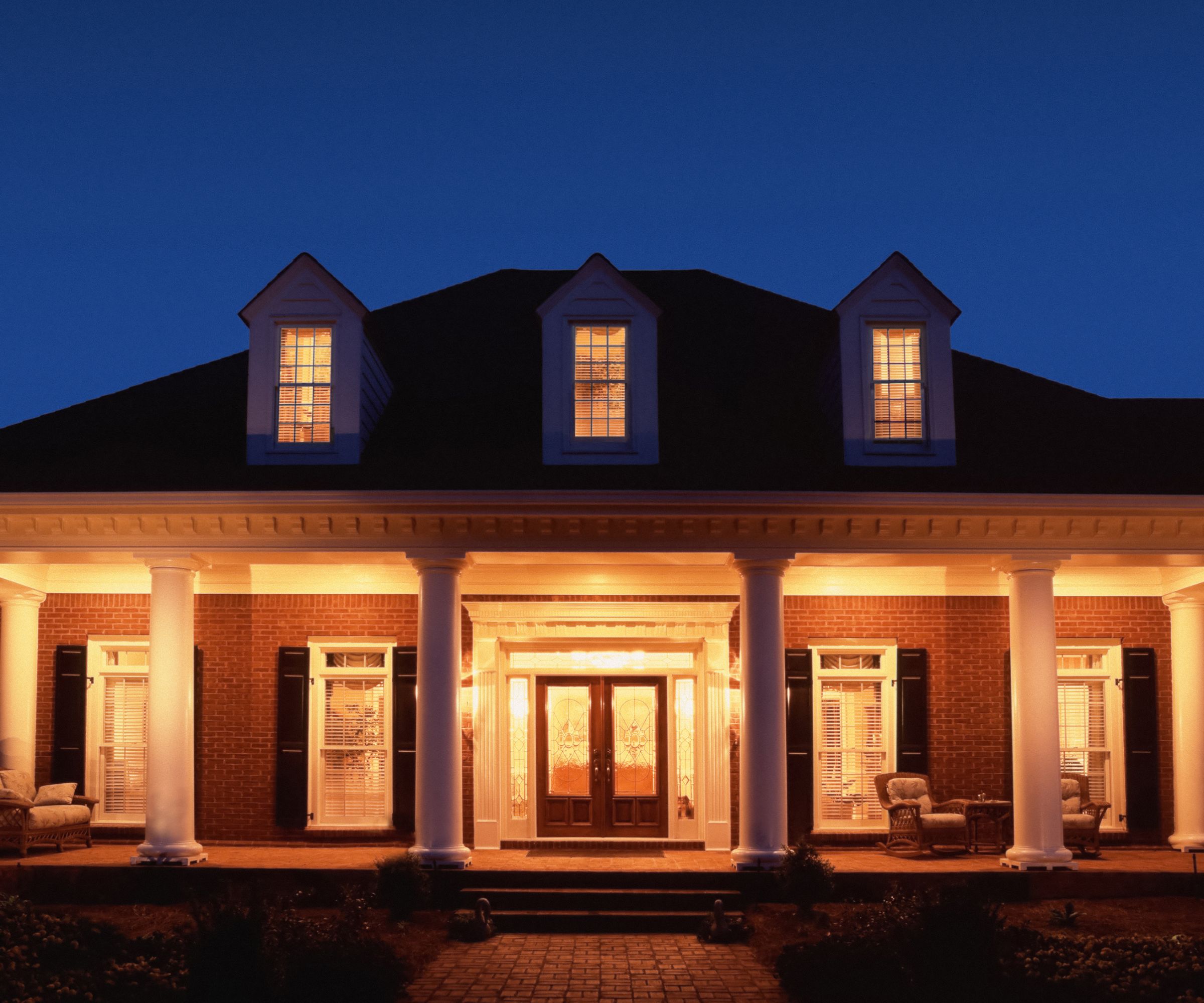How to light a veranda – expert advice for lighting this tricky spot
An expert reveals the best way to light a veranda - and one method you should avoid if your house faces south


A veranda is a beautiful feature, opening your home out onto the world and giving you and your family a covered spot for enjoying the outdoors.
However, when the sun goes down, it can be hard to light a veranda. They take up a lot of floor area and expose much of your home, so lighting them without compromising on privacy can be a delicate balance.
I spoke to an expert about the best ways to light a veranda, for stylish and practical outdoor lighting.
1. Try ceiing lights

One of the best and simplest ways to light a veranda is to use ceiling lights.
Exterior structure expert Ashley Smith says, 'Ceiling lights can provide consistent, overhead lighting for a covered veranda, but the number required depends on the size of the space and the desired lighting effect.'
On smaller verandas, you can make do with a single flush or pendant light for each side of the veranda. This gives every light coverage without making the lighting too stark.
If you have a larger space, Ashley recommends recessed lights. 'For larger verandas, multiple LED lines ensure balanced illumination across the entire area which allows you to tailor the brightness to the occasion'.
Design expertise in your inbox – from inspiring decorating ideas and beautiful celebrity homes to practical gardening advice and shopping round-ups.
Ashley is the President and Managing Director at markilux USA, a global leader in high-quality awnings.
2. Try wall lights

If you don't like overhead lighting, you can use wall lights for a less intense effect. 'Wall lights can add both functionality and a decorative touch to your veranda,' says Ashley. 'The key is selecting a style that complements the architectural design of your space.
So, if you have an old colonial home, aim for a wall light in keeping with the local style. On newer builds, you have a lot more latitude. Modern farmhouse-style lights can give you a good mix of old and new aesthetics.
3. String lights on the railings

As well as ceiling and wall lights, you can use string lights to add a little ambiance. While these lights won't give practical lighting, they can be the perfect finishing touch, creating a soft glow to complement the rest of the space.
String lights can also become part of how you define your style. You can use colorful lights in a modern space for a neon effect, or use faux-Edison bulbs in a more traditional veranda. You can even find some string lights - like this vine light garland at Anthropologie - which imitate a more natural look.
4. Uplight the walls

If you don't want to wire in wall lights, or don't like the idea of a permanent fixture, another way to light a veranda is to uplight the walls.
There are a couple of benefits to uplighting walls. The first is that it looks dramatic. Wall lights are great, but they can be a little staid, like having streetlights on the side of your house. Uplighting, however, makes use of the innate features of walls on your veranda, bathing the materials in light rather than mounting the light on the side.
Another benefit is that it isn't a permanent change. Installing wall lights is a permanent modification to the exterior of your home. if you don't like the fixture you buy now you can swap it out down the line, but the wiring and mounting are there to stay. If you uplight the walls, you can always remove the lights later on. Unless you use well lights, it isn't a permanent fixture. This has the added benefit that you can play with your lighting throughout the year.
5. Avoid solar lights
Unless your veranda faces south, don't use solar lights. While solar lights can work in the shade, they aren't effective, so using them in covered verandas means only a couple of hours of light per night. This is especially true for solar wall and ceiling lights - these can't be used under a veranda, because they won't get enough sun.
However, if your home faces south, you can use solar lights. Just make sure the panel is in bright sunlight, ideally just in front of the siding under a rail.
Verandas offer several entry points to your home, so they aren't the most secure feature. It's worth exploring if you should leave your light on all night and learning more about security lighting.

As a gardens and lifestyle contributor, Alex makes sure readers find the right information to help them make the best purchase. Alex got his start in reviewing at the iconic Good Housekeeping Institute, testing a wide range of household products and appliances. He then moved to BBC Gardeners’ World Magazine, assessing gardening tools, machinery, and wildlife products.


